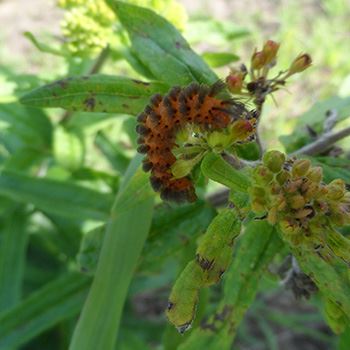“Unexpected” Findings in the Oak Openings

“Unexpected” Findings in the Oak Openings
Sometimes there is joy in the “unexpected.” In the Oak Openings region, the “unexpected” may appear as a new research finding, a certain state-listed plant found emerging in a newly restored area or the discovery of a rare wildlife species. These sort of things happen every season, and each new revelation always brings excitement and renewed hope for the future of the region’s species diversity.
In the last few years, a special, “unexpected” find has been continually reported---a rare moth actually named the “Unexpected Cycnia Moth” (Cycnia inopinatus). As of 1988, this animal was becoming more difficult to find due to habitat succession, development, invasive species presence and fire suppression. Endangered in Ohio, it can only be found in two to three places in the state and is considered uncommon to rare and local throughout its range.
Only recently has this moth been reported in many sandy barren habitats at Oak Openings Preserve Metropark, as well as other properties in the Oak Openings corridor. A management success story, this species is making a comeback as a result of prescribed burning, wildlife corridor connections, habitat restoration and native plantings such as butterfly milkweed. As a host plant, milkweed (Asclepias) is essential to its existence, providing the only food source for the bright orange caterpillar. Metroparks grows this plant and routinely adds it to restored sites for species like the Monarch butterfly and the Unexpected Cycnia moth. If you are out walking the trails this time of year, be sure to take a second look at the bright orange butterfly milkweed. You may be surprised to see something “unexpected” on that plant.
Did you know? The Unexpected Cycnia caterpillar is a bright orange color (like the Monarch butterfly) which serves as a warning to other species. The alkaloids in the milkweed are toxic. The adult moth is light gray in color.
#promiseskept #metroparksforever